Whether you are looking for a relaxing spa retreat or an exhilarating adventure, Shanghai is a city where you can witness tradition and modernity existing side by side. Shanghai is the most innovative and most significant metropolis in China due to the unique combination of contemporary technologies and deep-rooted traditions. Being anywhere in Shanghai, from the historical Bund promenade to the Lujiazui district's iconic skyscrapers, you will never be tired of enjoying the eye-catching places and wondering whether this dazzling city should be marked on your travel map. Enjoy reading as this guide explains why Shanghai should be on your travel map and why you might want to consider visiting. So, prepare yourself to discover the best things the city offers and decide whether to mark it as the next destination to explore.
What Makes Shanghai a Top Destination?
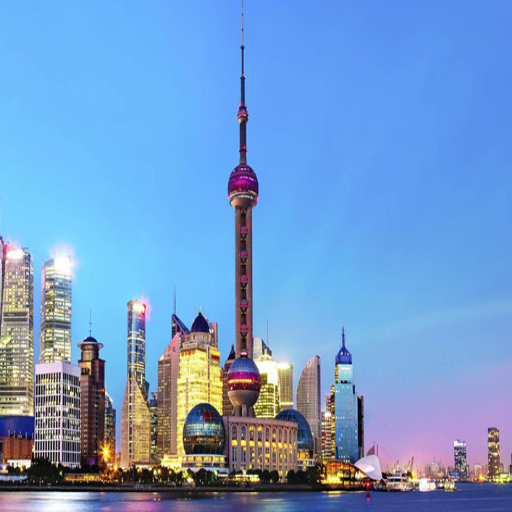
Shanghai's Unique Blend of Tradition and Modernity
Shanghai is a dazzling symbol of how a city can intertwine traditions alongside innovations. On the one hand, the historic charm of neighborhoods like “the Bund” and colonial era architectural landmarks offers a glance at the city’s historical charm. Tourists can marvel at the numerous Europeanized buildings constructed along this waterfront in the nineteenth and early twentieth centuries. Meanwhile, just across the Huangpu River, the futuristic skyline of Lujiazui gleams with its towering skyscrapers. The city boasts the Oriental Pearl Tower and Shanghai Tower, representing the city's technological advancements and rapid economic development. The City possesses a striking architectural juxtaposition that tells many stories, showing the City's dual identities.
Beyond the stunning scenery, the city of Shanghai retains a unique blend of modern innovation and traditional culture. Shanghai is a world hub for technology, art, and culture, bustling with modern activities. In contrast, ancient art forms such as calligraphy and handcrafted arts are still available in the marketplace. Shanghai is marked by its international tech expos, which capture its global leadership. Places like the M50 Creative Park mark Shanghai as a tourist destination, showcasing cutting-edge art alongside international travelers. One can savor the high-tech light shows on Huangpu or visit hidden local restaurants and taste their signature dish, Shanghai xiao long bao. It is a city with over centuries of history waiting to be discovered. Such a blend of ancient and modern cultures is bound to fascinate tourists worldwide.
Top Attractions and Must-See Sights in Shanghai
The Bund (Waitan): A stunning coastline of the Huangpu River, the Bund is among the most popular attractions in Shanghai and serves as an iconic landmark. It includes structures from the colonial period and modern skyscrapers, giving a breathtaking view of ancient and contemporary Shanghai. Looking up, one can walk on the promenade or take a light raft for a stunning view of the city's attractions.
Yu Garden (Yuyuan Garden): Located in the city center and surrounded by hustle and bustle, this traditional Chinese garden allows for a peaceful escape. Chenghuang Pavilion Yu Garden is an exceptional conventional Yu garden-style ancient building masterpiece preserved from the Ming Dynasty. Furthermore, it includes splendid pavilions, stone carvings, ancient trees, and numerous relaxing ponds. Yuyuan Garden is a must-visit place to enjoy the soothing vibes and beauty that showcase traditional Chinese civilization.
Shanghai Tower: This modern engineering spectacle holds the record for the world’s second-tallest building. Shanghai Tower's most advanced and cutting-edge design houses a twisting framework and sustainable technologies. Visitors can expect a breathtaking experience when they visit the observation deck on the 118th and 119th floors, as it provides stunning aerial views of the entire city.
Nanjing Road: Managed to become one of the most popular and overcrowded avenues globally, Nanjing Road is a stunning street dedicated to shopping and dining. Lined with endless eateries serving splendid Shanghai delicacies, and boasting local shops of all sizes, including a High-end Shop, it extends over 3 miles, catering to everyone’s shopping desires.
Zhujiajiao Water Town: With remarkable canals, ancient stone bridges, and historic architecture, this water town is known as the “Venice of Shanghai” and is just a short drive from the city center. Visitors can uncover the region's culture through boat rides and enjoy splendid local crafts.
Shanghai Museum: The Shanghai Museum is notable for its extensive collection of ancient Chinese relics and is a must-visit place for all art and history lovers. It contains numerous exquisite jade and bronze artifacts, sophisticated calligraphy, and intricate ceramics, portraying China’s deep history and artistry.
Tianzifang: From a cultural perspective, it is an artsy hotspot and includes China’s trendy arts district. It is built of narrow, winding streets. With its many boutique shops, art galleries, studios, and quaint cafes, this location is suitable for anyone who wants to immerse themselves in Shanghai’s contemporary art world and enjoy the preserved Shikumen-style architecture.
There are numerous reasons to visit Shanghai, whether the towering skyline, the old traditional garden charm, or the lively shopping and dining scenes. Thus, Shanghai is a must-see destination for tourists all over the globe.
Reasons Why International Tourists Flock to Shanghai
Landmarks and Architecture: Shanghai is a modern city built on history and has an astonishing combination of architecture. These sites have distinct marks of the soul of Shanghai and its rapid economic growth, expanding in all these directions. Features Tower and Opposing the Pearl Tower, along with Shanghai Bund and the dominant Lujiazui, reflect regions of Shanghai, while Dongtai covers all areas of the city, offering exquisite refinements.
Culture and History: Shanghai's culture and history have been a major factor in attracting tourists from all over the world. Its rich archeological heritage explains ancient art and artifacts in Yu Gardens, a Chinese garden from the Ming dynasty. The Shanghai Museum also provides this service. Strolling through the Old City or the French Concession gives a splendid display of Traditional Chinese Culture blended with colonial rule.
Shopping and Dining: Alongside the astonishing garden and museum, Shanghai also has unique dining features, which make it stand out among other cities offering international boutiques and flagship brands expanding stores in Tianzifang.Also, Gastronomy X includes a vibrant food culture, from canto xiao long bao, a type of savory-filled dumpling served in soup, to an exquisite Michelin-starred restaurant. This variety further adds to the experience for culinary travelers.
Entertainment and Art in the City: Shanghai continues to develop as a cultural beacon. Art areas such as M50 are home to some of the most progressive works of Chinese and global contemporary artists. Regular opera and theater shows also range from traditional Chinese narratives to modern stories. The region is also known for Olympic Art Festivals such as the Shanghai International Film Festival.
Easy commutes and reaching sites: Another point of interest for tourists is the city’s infrastructure. Shanghai has one of the longest equipped metros, 800 miles long, and is one of the most efficient, expanding access to attractions across the city. There are two international airports. Furthermore, works of high-speed rail add access to traversing the rest of China, making the city an access to the country.
Shanghai unites history and modern vibrancy while adding global influences, making it one of the primary targets for travelers looking for multifaceted urban explorations.
How to Experience Shanghai's Vibrant Nightlife?
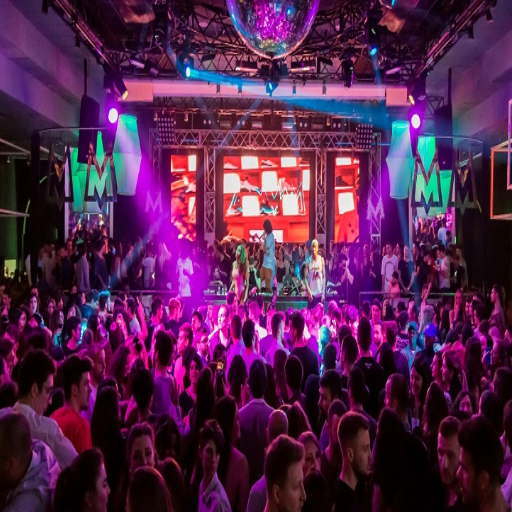
Best Nightlife Spots in Shanghai
Shanghai nightlife is as variegated as the city, boasting a unique offering for every kind of traveler. Bar Rouge on the Bund should top your list if you wish to get the best skyline aesthetics. Its chic design with outdoor terraces overlooking the Huangpu River can never be achieved anywhere else. If you are looking for live music, The Jazz Bar at the Fairmont Peace Hotel offers cordial, classic performances, making it an ideal destination for jazz lovers.
The adventurous and modern vibe claims its space at FOUND 158 in Jing'an. This bustling underground hub is packed with distinctive bars, clubs, and restaurants selling a variety of cuisines. It not only pulses with nightlife but also attracts both residents and foreigners. M1NT is the place for an ultimate experience where lavish interiors intensely focused on the dance floor pulsate during late-night hours. That is, if you prefer to get the clubbing dose of Shanghai's nightlife.
Speakeasy-style bars hidden in historic alleys give Shangaiging vintage vibes and are ideal for discovering undiscovered cocktails in a remarkably intimate setting. Whether you wish to enjoy an upscale party or a quiet night sipping meticulously crafted cocktails, Seductive Shanghai is ready to serve every whim, making every night in this bustling metropolis unforgettable.
Shanghai's Most Popular Bars and Clubs
Bar Rouge: Located on The Bund, this iconic rooftop bar has terrific views of the Shanghai skyline, chic interiors, and expertly crafted cocktails. Regular live DJ performances, themed events, and a high-energy atmosphere make Bar Rouge a true party venue and essential hot spot for tourists and locals alike.
The Nest: Divided into two areas, the bar and the restaurant, The Nest is known for its relaxed yet sophisticated atmosphere and Scandinavian interior. Its menu features an incredible and mouth-watering small-plate seafood selection. The Nest remains a vital part of Shanghai's culinary and nightlife scene and is known for its signature cocktails using high-quality ingredients.
Speak Low: Set in the Former French Concession, this award-winning speakeasy bar has multiple floors of unrivaled cocktails and themed decor, complete with distinct ambiance and menus on each level. The facade is rather simple, with the only indication being the name "Speak Low." Expert mixologists make award-winning cocktails, which puts this bar on many lists, making it essential for cocktail lovers to visit.
Linx: One of the premier nightclubs in Shanghai, Linx is known for its luxurious vibe, heavy use of modern lighting and sound equipment, and top-tier acoustics. It often hosts international DJs and high-energy events to cater to an upscale crowd. Moreover, its classy VIP sections and lavish drink selections make it a perfect place to enjoy a luxurious night out.
Union Trading Company: This is a favorite in the neighborhood for its bright yet casual atmosphere. Union Trading Company prides itself on cocktail innovation. The bar’s relaxed demeanor and literal charm, combined with an inventive menu, have earned it broad acclaim for its modern approach to traditions. Union Trading Company’s cozy setting is ideal for gatherings and laid-back evenings.
Every venue underscores the uniqueness of Shanghai’s nightlife, where modernity and age-old practices blend to create breathtaking experiences for guests. Whether you are seeking luxury, culture, or creativity, these venues reflect the heart of Shanghai after dark.
Nightlife Etiquette for International Tourists
While exploring Shanghai's vibrant nightlife, being mindful of customs and etiquette ensures a smooth and enjoyable experience. To start with, dress smartly for the upmarket lounges and clubs, which tend to be business casual or formal. It is always advisable to be overdressed. In almost all cases, tipping is not done, but in some premium venues, it is welcome, particularly if the service is outstanding.
Respecting local laws, such as the drinking and smoking ages and relevant regulations regarding alcohol consumption, is critical in every country. Having a drink with friends is common, but smoking is only allowed in certain locations, and getting drunk in public is considered inappropriate. It is also crucial to grasp the various forms of payments; for instance, Shanghai businesses accept mobile payments like Alipay or WeChat Pay; however, having physical cash or credit cards from foreign countries as a safety net is useful.
Finally, remain sensitive to other cultures when interacting with them. A nice smile can solve problems with languages. Maintaining calm while interacting positively impresses everyone. Adhering to these guidelines makes every night out in Shanghai unforgettable while being considerate towards local customs.
Exploring the Architectural Marvel of The Bund
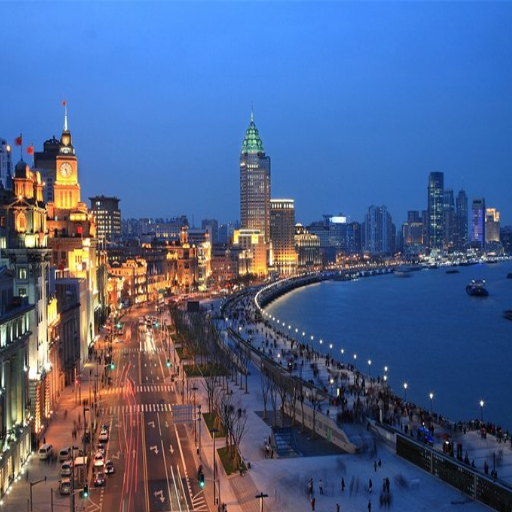
Historical Significance of The Bund
The Bund in Shanghai is a waterfront area depicting the city's colonial history and architecture. The area is about 1.5 kilometers long and contains buildings of immense historical value. The architecture is Gothic, Baroque, Romanesque, and Neo-Classical, which is accompanied by a vivid English style facade. These buildings were made in the late 19th and early 20th centuries and were the epitome of global trade when Shanghai was emerging as a trade hub during these years, when the Chinese Renaissance began.
During this time, international settlements thrived, making the Bund a financial and cultural center for Chinese and foreign elites. This section is home to the Former Shanghai Club and the BUND, which mark the golden era of banking, shipping, trade, and commerce. The modern age has changed much in the world, but these buildings have managed to withstand the test of time, allowing visitors to witness history in these preserved structures. The Bund has tremendous historic value, as it displays the transitions made by Shanghai from a colonial port city to a global metropolis. The Bund region showcases immense scenic beauty and captures the attention of millions every year.
Best Time to Visit The Bund for Photographers
The perfect time to photograph The Bund is during the golden hours, before sunset and after sunrise. The soft, diffused light during early mornings beautifully highlights the intricate architectural detailing of the historical buildings and, along with soft crowds, allows for clean, unobscured photographs. The warm light during sunset perfectly complements the modern skyscrapers across the Huangpu River.
Moreover, the Bund becomes an astonishing sight after sunset as the buildings on either side of the river light up, striking a perfect contrast between history and urbanization. A stable tripod is recommended for night-long exposure shots to capture the glowing lights and reflections on the water. Seasonal considerations like clear autumn or spring skies improve visibility and provide ideal conditions for striking photographs.
The Bund's Role in Shanghai's Economic Boom
The Bund Area serves as an active reminder of the city's transformation. It was once called the 'Wall Street of the East'. 'The Bund' took care of International trading and commerce in the early 20th century. It continues to be one of the most critical places in China's economy while preserving its history and providing state-of-the-art technology.
The significance behind Bund’s strategic location is its proximity to the Huangpu River, as it creates a hub for businesses and enterprises. All these have also aided Shanghai in becoming a leading metropolitan city in China. Multinational and local enterprises' increasing demand for the Bund aids in developing finance, tourism, and real estate. Furthermore, Bund is located close to luxury shopping centers, hotels, and posh offices, significantly contributing to the region's GDP.
With millions of people visiting the Customs House and the Jinjiang Hotel, tourism continues to be a key contributor to the economy. The sustaining of cultural identity through modern towers like the Shanghai Tower and the new waterfront promenade strengthens The Bund’s image as a cultural and economic center. The blended approach to heritage preservation and development keeps Shanghai’s culture while also enabling new infrastructure to be built that serves the community's needs.
What Are the Highlights of the Shanghai Museum?
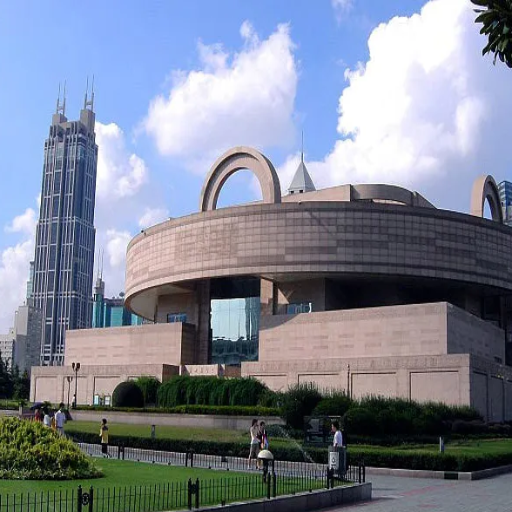
Famous Exhibits to See at Shanghai Museum
One of China’s most reputable museums is the Shanghai Museum. It is home to an extraordinary collection, or in other words, an exhibit that contains artifacts from almost every corner of China and showcases the depth of China’s culture and history. One exhibit that stands out in this amazing landmark is the collection of Ancient Bronzes, which has intricately designed vessels and tools from the Shang and Zhou Dynasties. These pieces highlight the outstanding craftsmanship skills and the ceremonial importance of bronze in early Chinese civilization.
Another must-see section is the Chinese Painting and Calligraphy gallery, which contains elegant pieces from different dynasties. The magnificent brush strokes and eloquent settings made in jade capture most people’s attention. In addition, ancient jade artifacts, including ceremonial objects and ornaments, are on display, depicting the meaning and importance of mighty jade throughout history.
The Ceramics Gallery gives the audience insight into China’s role as a worldwide leader in ceramics. From old earthenware pieces to superb porcelain from the Ming and Qing dynasties, this collection supports the development of skills and artistry through the years. The gallery of art from the Minority Nationalities of China displays traditional clothing and decoration crafted by different ethnic groups. This gallery portrays China’s rich culture and shows what makes it unique.
The Shanghai Museum shows these treasures to capture beauty and give insight into the life, culture, and inventions of China's ancient and modern peoples.
Visitor Tips for Navigating the Shanghai Museum
Prepare For The Trip: The Shanghai Museum is a crowd favorite, so arriving early ensures you avoid congestion and can relish the exhibits. Reserve two to three hours to navigate through the extensive collections.
Book a Reservation: Reservations can be made at no cost; however, they are subject to ticket checks for congestion control purposes. Visit the museum’s social media or official website for the latest updates on ticket policies.
Look out for Featured Exhibitions: Given the approximately 120.000 artifacts on display, it is easy to be overwhelmed. Guests are encouraged to look out for the most visited parts, including the Bronze Gallery, Ceramics Gallery, and Calligraphy Gallery.
Use of Audio Guides is Encouraged: The museum provides audio guides, the majority of which are multilingual, to offer further insight into the exhibits. Alternatively, guided tours are held at designated times throughout the day.
Observe Museum Etiquette: Photography policies change with every exhibit, so it is advisable to read the notices present in each gallery. Kindly do not use flash and keep talking to a whisper level to be polite towards others in the shared space.
Enjoy the Interactive Features: The Shanghai Museum has special exhibitions and workshops on its Special Exhibit Calendar and cultural activities. Looking at the event calendar beforehand will allow high school students and adults to prepare for additional activities beyond passive learning.
Make Use of Available Resources: The museum offers amenities such as lockers, gift shops, and a café, which allow visitors to grab a bite or drink to rejuvenate. These resources greatly improve the user experience.
With proper planning, moving through the specially themed exhibits, and utilizing them and other resources provided, the visitor can learn to appreciate the history and culture that the Shanghai Museum has captured for everyone.
Shanghai Museum's Contribution to Cultural Education
The Shanghai Museum significantly impacts cultural education by providing meticulous collections of artifacts spanning thousands of years of Chinese history. From exquisite ancient bronzes to traditional calligraphy, the museum's permanent galleries tell the story of Chinese art and civilization. In addition, the museum also organizes temporary exhibitions that promote regional heritage and international cultural exchange, broadening the understanding of the globe.
Moreover, the museum’s educational activities, including workshops, lectures, and guided tours, are tailored to be more interactive for different age groups. The use of modern technology like touch screens and virtual tours improves engagement, making more people understand and appreciate China's documentary treasures. These initiatives help preserve historical artifacts and encourage learners of all ages to foster a greater appreciation of culture in a world that is continually becoming more connected.
Why Yu Garden is a Must-Visit Spot in Shanghai?
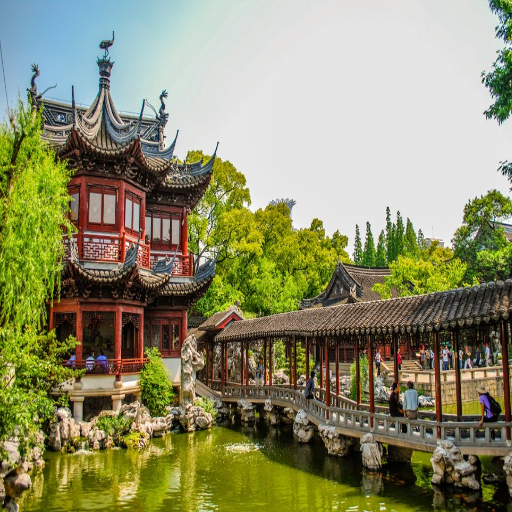
Historical Background of Yu Garden
Yu Garden, or the Yu Yuan Garden, is one of the best classical Chinese gardens that have survived to modern times, and it also ranks among the best. It was built sometime from 1559 to 1611 A.D. during the Ming Dynasty by Pan Yunduan, a government officer serving in Suzhou. Yu Garden was designed as a place of leisure for his parents. The words "peace" and comfort resonate with what ‘Yu’ means. The garden evokes calming and restorative feelings. As a visitor, I felt an inexplicable connection towards the care and artistry that went into building this masterpiece.
Yu Garden has faced myriad challenges over the centuries, such as wars, changes in ownership, and neglect. Despite everything, it has been beautifully restored, ensuring it symbolizes Shanghai’s extensive cultural heritage. Understanding its history and struggle makes its impressive pavilions, rockeries, and ponds even more beautiful. Together with the natural beauty, human ingenuity in Yu Garden tells the story of every cubist’s love of art – it never ceases to lure visitors from around the globe.
Tips for a Relaxing Visit to Yu Garden
Go During Weekday Mornings: If you would like to take in the calm and tranquil setting of Yu Garden without its many visitors, you are advised to go on weekday mornings. This will let you appreciate the buildings' strategic design and magnificent beauty.
Dress Appropriately for the Occasion: The garden covers a large area, so it's advised to wear comfortable shoes, as it features rugged stone paths. Also, do not forget to wear light clothing, as it gets hot easily. Having an umbrella for unexpected rainfall is handy, too.
Do Appreciate all Six Scenic Spots: Considering the Grand Rockery or Exquisite Jade Rock, Yu Garden has six major scenic regions. Always put aside enough time to enjoy and explore the most exquisitely detailed areas. Guided maps and signs at the location will provide additional support so you don't miss the most popular spots.
Don’t forget to eat Yu Garden's Famous Soup Dumplings: After you explore and visit all the famous attractions in Yu Garden, you will need to fill your stomach. Therefore, don't miss out on eating Yu Garden's famed soup dumplings – aka xiaolongbao – provided at their local restaurants.
Capture the Magic, Mindfully: Photography is permitted, but it is equally important to appreciate the picturesque landscapes of the gardens without a camera. Being more mindful will deepen your sense of attachment to that realm and help you relish the moment.
Check Seasonal Events: Yu Garden has its share of traditional celebrations like the lantern shows during the Chinese New Year. It's a great period for visitors who want to enjoy the vibrancy of the culture and Yu Garden's historical beauty. Check the dates and details before visiting so you can plan accordingly.
Exploring the Architectural Beauty of Yu Garden
As I appreciated the scenic views of the Yu Gardens, it was impossible not to notice the astounding skill that had gone into every single element of Yu Garden’s architecture, incorporating various traditional aspects of Chinese design. The garden layout is an example of classical Suzhou garden style, with an exquisite combination of rockeries, pavilions, ponds, and vegetation. Every area in the garden is like stepping into a snapshot from a masterfully crafted photograph where the perspectives are intended to exhibit contrast and harmony. The pavilions bore exquisite carvings on the wood and had eaves that turned upwards, which gave them an antique elegance. The stone bridges and paths provided a strong continuity connecting numerous scenic vantage points.
Exquisite Jade Rock, an enormous piece of limestone said to be from the Song Dynasty, is a true architectural wonder. It caught my attention for two reasons. First, the rock's unique structure is unsurpassed, marked by deep holes and vivid shapes created by natural processes or sculptured by humans. The Rock perfectly portrays the Chinese principle of beauty, which is to appreciate the art done by nature. Second, the Dragon Wall is another astounding feature with immense meaning. It has artistic representations of a dragon head, making the wall beautiful and symbolic of Chinese mythology. From each corner of Yu Garden, one can see the reflection of the Yu Garden’s connection to Chinese history and culture. Never have I seen architecture so perfectly integrated with nature like in the Yu Garden.
Frequently Asked Questions (FAQs)
Q: Why should someone travel to Shanghai?
A: Shanghai is worth visiting because of its stunning skyline, rich history, and culture. The largest city in China has a mixture of traditional and modern sites, from the Bund, which is historic, to the skyscrapers of Pudong, which are contemporary. There is also a wide variety of food and busy markets, a great way to experience the city's culture.
Q: How does Shanghai measure up against other parts of China, like Beijing or Hong Kong?
A: Each of these cities has a certain appeal. Shanghai, Hong Kong, and Beijing have modern sites like the Great Wall and the Forbidden City. Hong Kong has terrific views of the harbor and a lively night scene. Shanghai is more industrial with more modern buildings, and if you are interested in urban exploration, it's a great place to visit.
Q: Is Nanjing Road a must-visit tourist destination in Shanghai?
A: Yes, Nanjing Road is one of the most renowned places in Shanghai and is referred to as a shopping paradise. It is more than 5 kilometers long and has luxurious and standard shops and food stalls. It is an excellent location to shop for foreign and local goods, so most travelers include it in their itinerary.
Q: What travel tips should I consider when planning a trip to Shanghai?
A: Planning to visit Shanghai? Remember these travel tips: If you need a visa, get that sorted out well before your visit. Arrange your accommodation as early as possible. To make communications smoother, learn a few words of Mandarin. Lastly, brace yourself for the hustle and bustle of the metropolis, and explore beyond the usual tourist spots for hidden gems.
Q: Should I try any unique aspects of Shanghai's cuisine?
A: Shanghai is known for its delicate flavors and the incorporation of fresh ingredients into its dishes. You cannot leave without tasting local offerings such as xiaolongbao (soup dumplings), shengjianbao (pan-fried buns), and an extensive list of seafood options. The city's food scene showcases a blend of culture and international dishes, which is a must for every traveler.
Q: Is Disneyland in Shanghai worth visiting?
A: Shanghai Disneyland is worth checking out for park lovers and families. It is one of the most contemporary and largest theme parks in the China region, featuring attractions that uniquely combine Disney's magic with Chinese culture. Both adults and children can appreciate the exciting activities offered at Disneyland.
Q: In what way does the Huangpu River improve tourist experiences in Shanghai?
A: Huangpu is integral to Shanghai’s appeal because it offers beautiful views of the city’s skyline and the iconic Bund waterfront promenade. A river cruise gives visitors a unique view of the city’s blend of old and new architecture, which is unforgettable for tourists.
Q: How are Shanghai’s hotels and accommodations for foreigners?
A: Shanghai has numerous hotels and other forms of accommodation suitable for all financial plans, including luxury hotels, serviced apartments, and even budget hostels. People’s Square and the French Concession are the two most popular among tourists, and are known for their central locations and green spaces.
Q: Is reaching cities such as Hangzhou, Suzhou, or Nanjing from Shanghai easy?
A: Yes, Shanghai’s high-speed rail lines conveniently connect it to major cities including Hangzhou, Suzhou, and Nanjing. These cities are great for day or weekend trips as they offer a chance to visit more traditional and picturesque areas of China.


